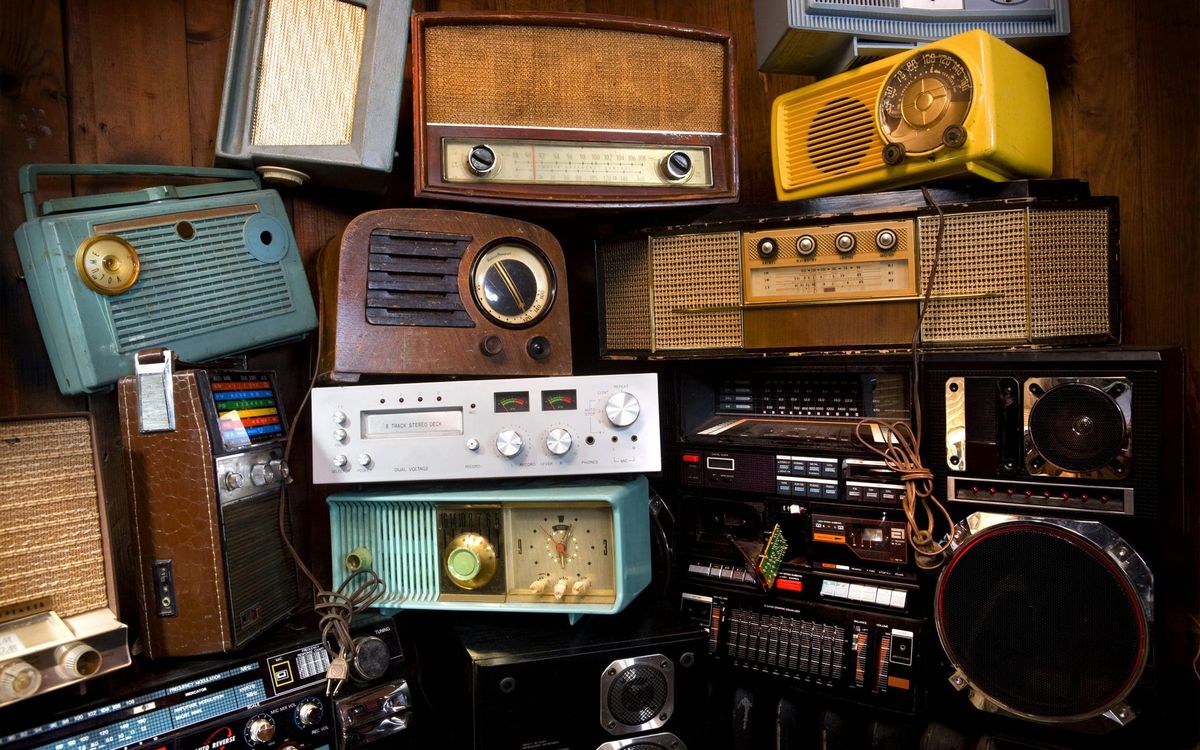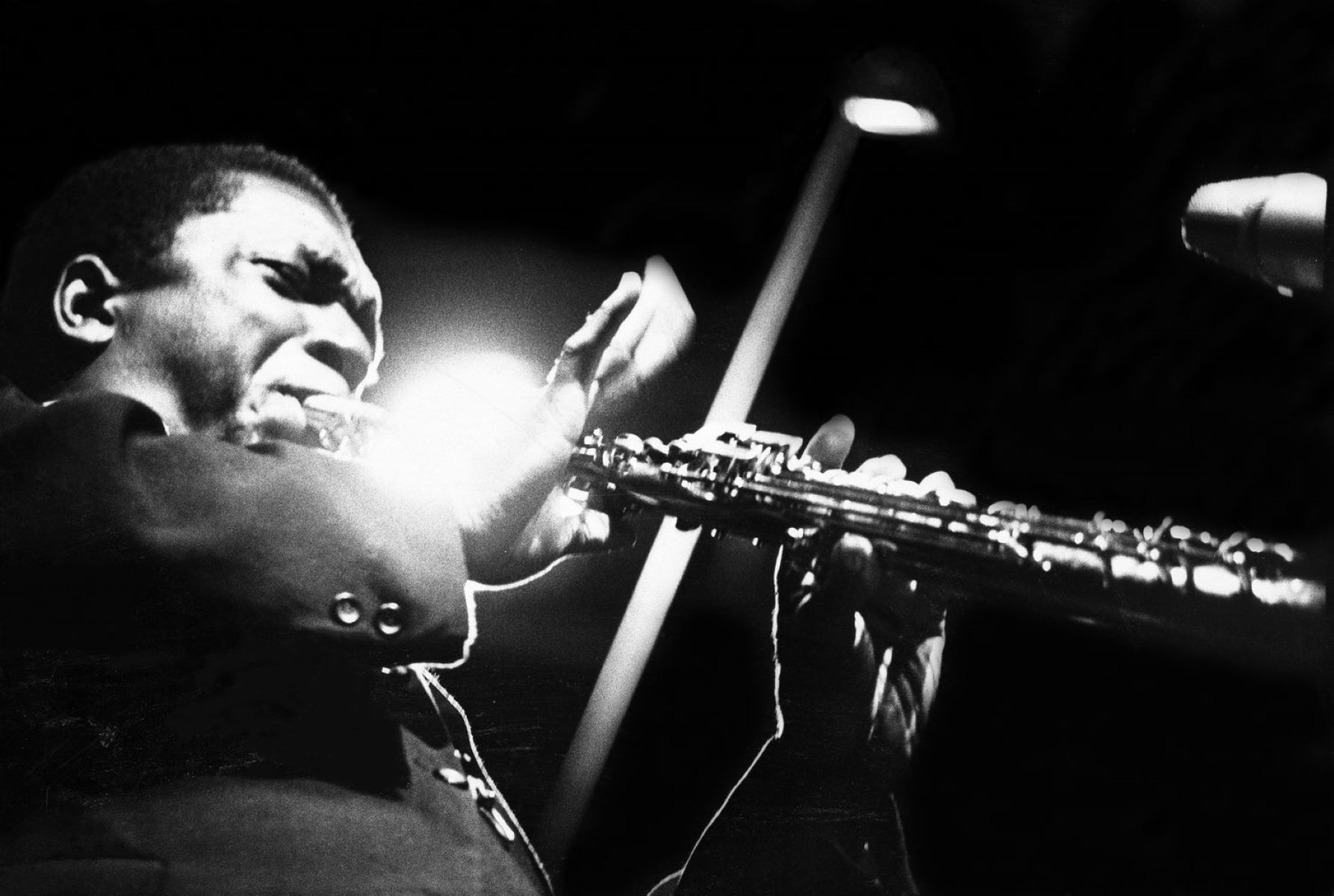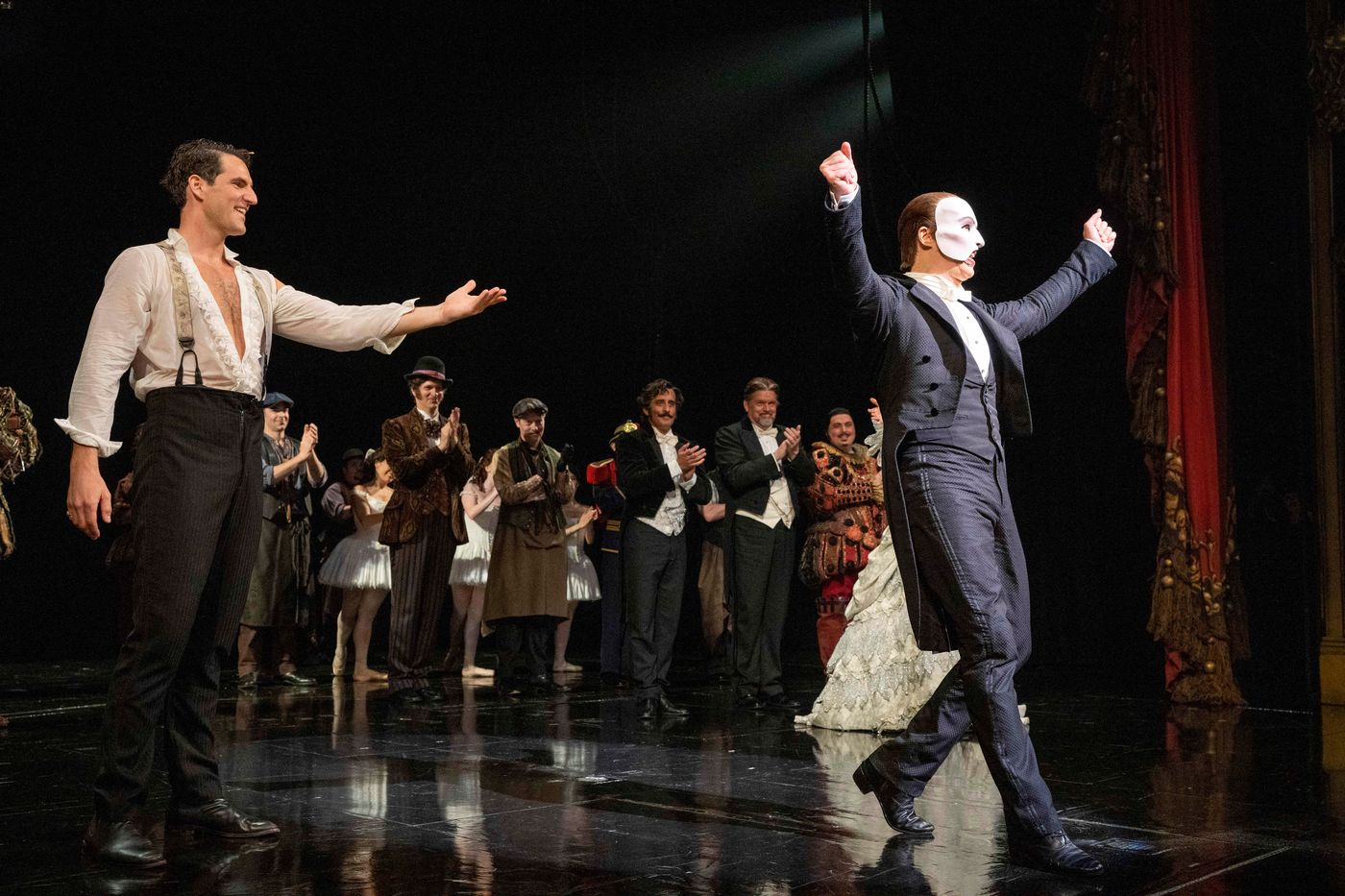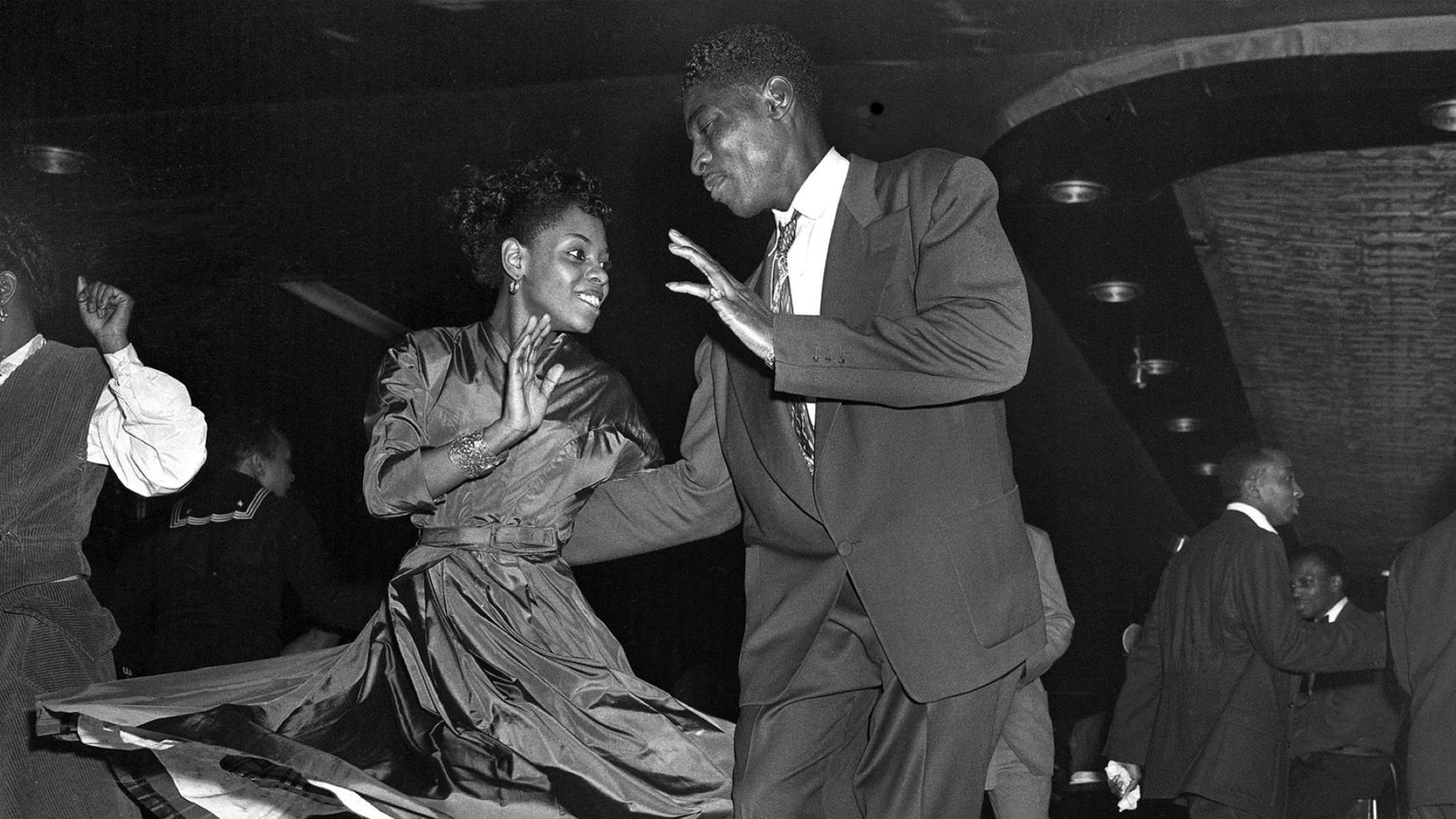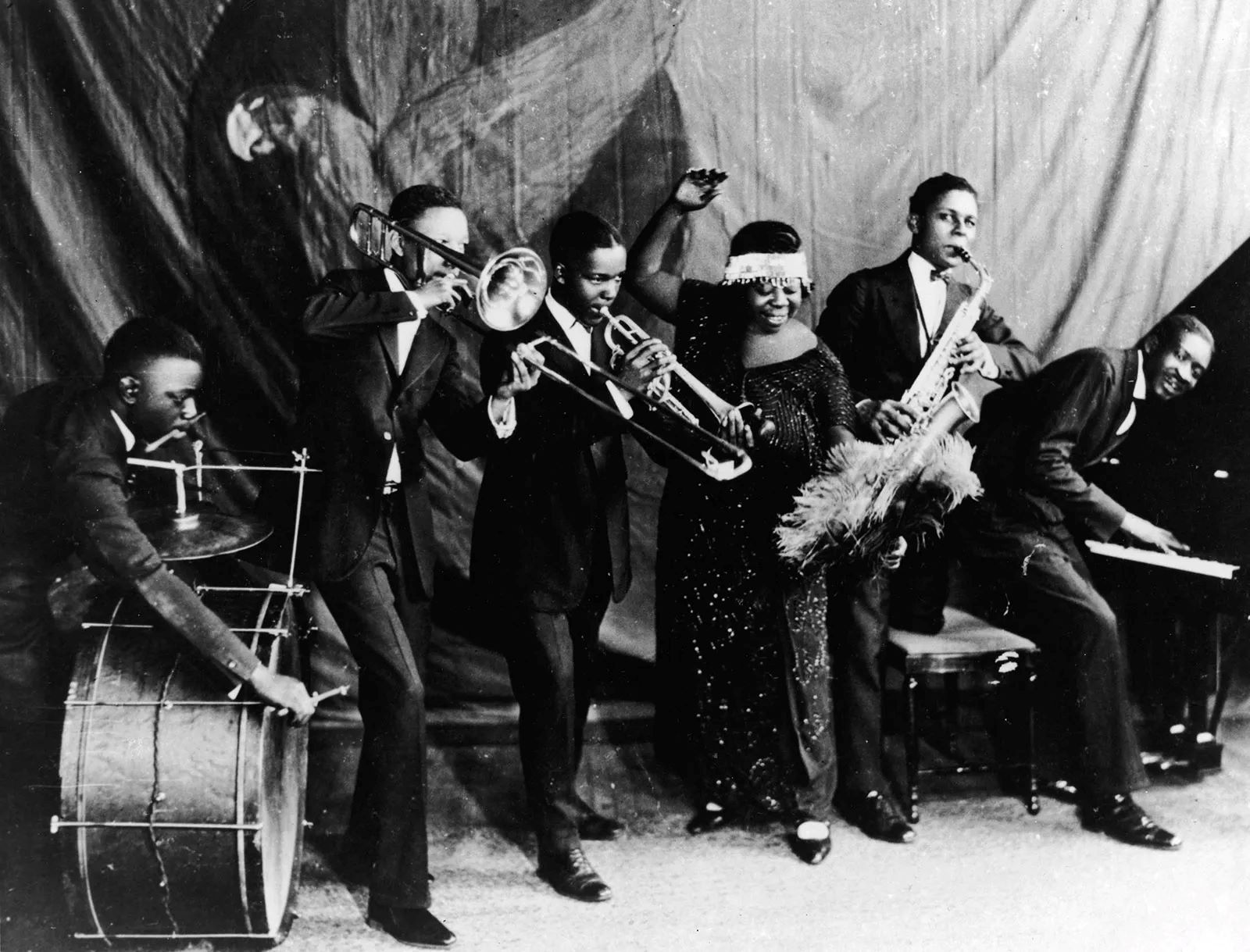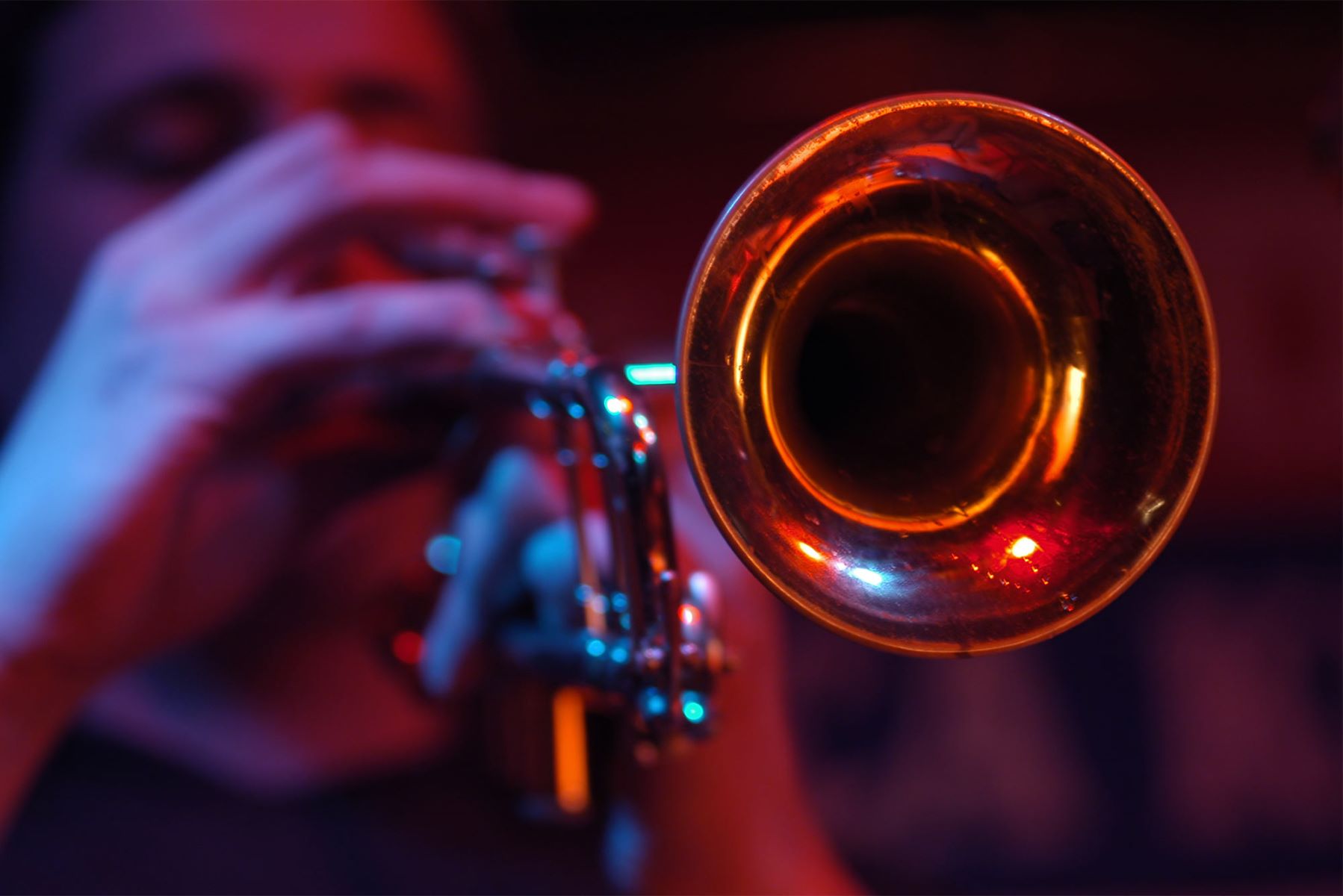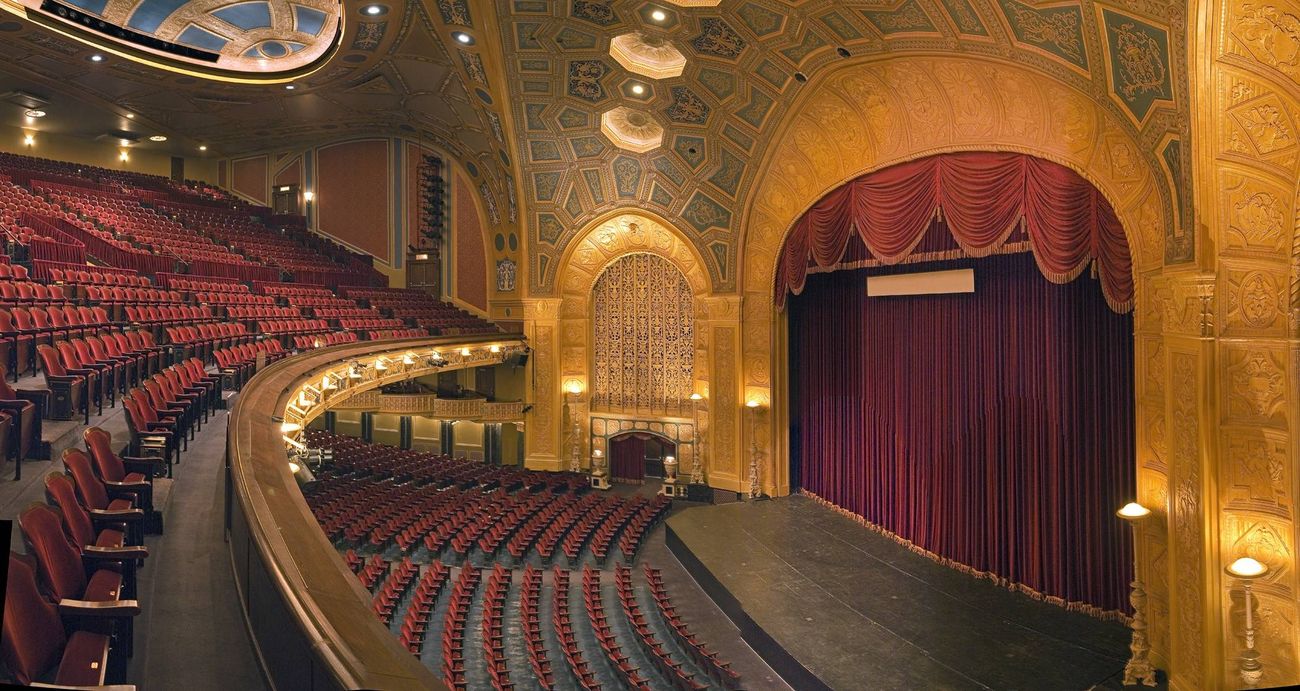Home>Events & Info>Opera>When Did Opera Begin
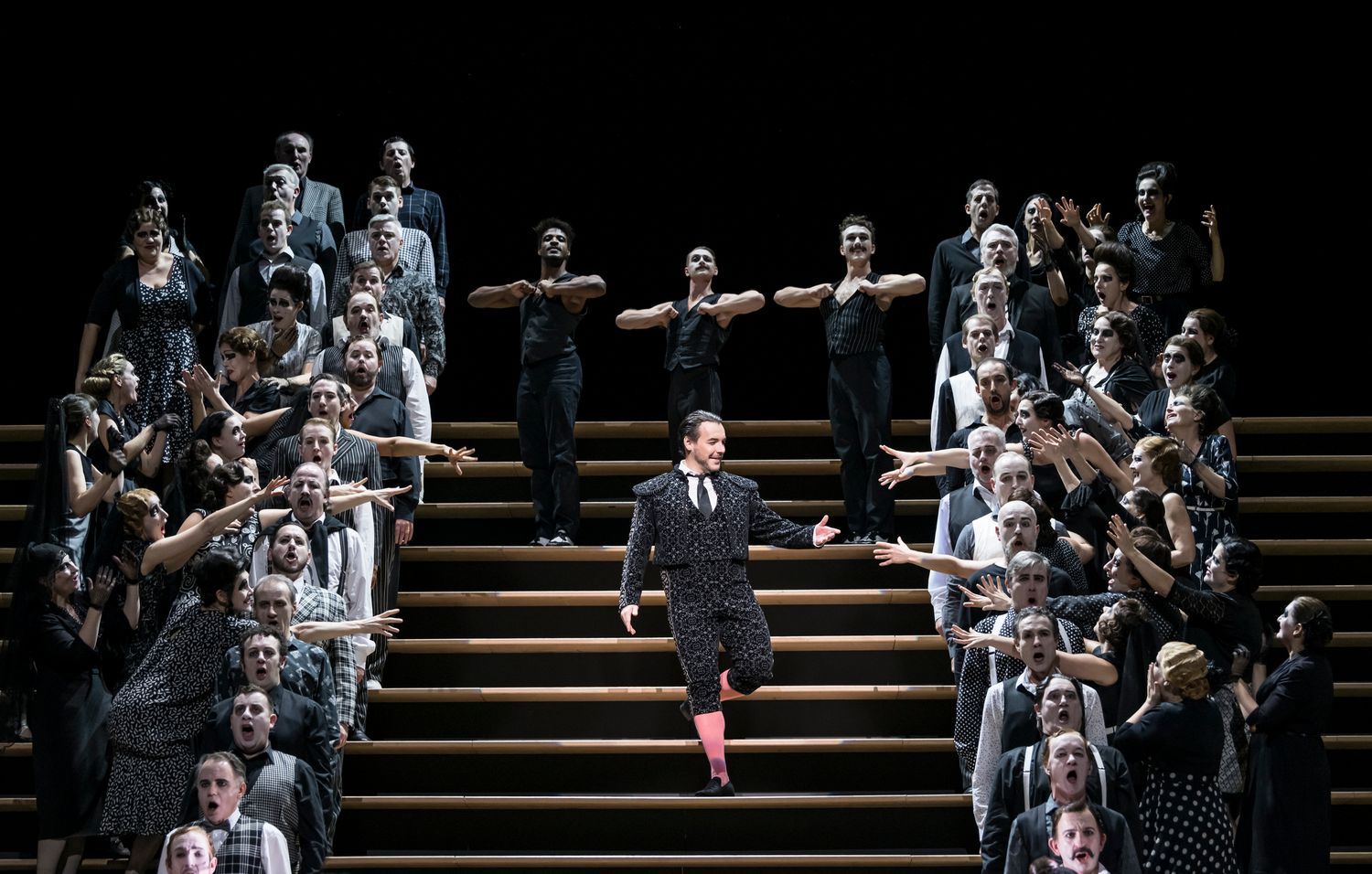

Opera
When Did Opera Begin
Modified: January 22, 2024
Discover the origins and history of opera. From its humble beginnings to becoming an influential art form, learn about the evolution of opera and its impact on music and culture.
(Many of the links in this article redirect to a specific reviewed product. Your purchase of these products through affiliate links helps to generate commission for AudioLover.com, at no extra cost. Learn more)
Table of Contents
Introduction
Opera, with its grandeur, emotion, and soaring melodies, has captivated audiences for centuries. It is an art form that combines music, theater, and spectacle to create an unforgettable experience. But have you ever wondered when opera began? This article will delve into the origins of opera and its evolution throughout history.
The origins of opera can be traced back to the late Renaissance period in Italy. It emerged as a response to the desire to revive the works of ancient Greek drama, which employed a mix of music, poetry, and acting. Opera, meaning “work” in Italian, was a term coined to describe this new art form that blended music and drama.
Initially, opera was a means of entertainment for the aristocracy and the elite. The first known opera, “Dafne” by Jacopo Peri, was performed in Florence in 1597. It was a groundbreaking piece that set the stage for the development of opera as a distinct art form.
Over time, opera evolved and gained popularity throughout Europe. It became a platform for showcasing the skills of composers, singers, and stage designers. It also underwent significant changes in terms of musical styles and dramatic conventions, reflecting the cultural and social changes of the time.
Throughout its history, opera has been shaped by different periods and styles. From the elaborate Baroque operas of the 17th and 18th centuries to the grandeur and emotion of Romantic operas in the 19th century, each era left its mark on the art form.
In the modern era, opera has continued to thrive, with composers pushing boundaries and experimenting with new styles. It remains a powerful and dynamic art form, capable of evoking a wide range of emotions and captivating audiences around the world.
Origins of Opera
The origins of opera can be traced back to 16th-century Italy, during the late Renaissance period. It was a time of artistic rebirth, marked by a renewed interest in the music and culture of ancient Greece. Inspired by the dramatic performances of Greek tragedies, a group of intellectuals sought to recreate the synthesis of music and poetry found in these ancient works. Thus, opera was born.
One of the key figures in the development of opera was Jacopo Peri, an Italian composer. In 1597, his work “Dafne” premiered in Florence, marking the first known opera. “Dafne” was a groundbreaking production, combining recitative (a form of musical declamation) and monody (a style of solo singing accompanied by a simple instrumental line).
Peri’s “Dafne” set the foundation for the operatic genre, paving the way for future composers to explore the possibilities of this new art form. The fusion of music and drama was central to opera, and it quickly gained popularity across Italy.
Many influential composers of the time, including Claudio Monteverdi and Francesco Cavalli, contributed to the growth and development of opera. Monteverdi’s operas, such as “Orfeo” and “The Coronation of Poppea,” showcased his innovative use of melody, harmony, and dramatic expression. Cavalli, on the other hand, was known for his skillful composition of vocal lines and his ability to create emotionally charged scenes.
During this period, opera became a form of entertainment favored by the aristocracy and the elite. Lavish productions were staged in palaces and theaters, showcasing the talents of musicians, singers, and dancers. The popularity of opera quickly spread beyond Italy, with performances being held in other European countries.
Opera was not only a vehicle for artistic expression but also a means of promoting political and social agendas. It was often commissioned by wealthy patrons who used it to demonstrate their power and influence. Many opera plots revolved around themes of love, power, and betrayal, reflecting the societal interests of the time.
Overall, the origins of opera can be attributed to a desire to revive the dramatic and musical traditions of ancient Greece. By combining music, poetry, and theater, opera emerged as a distinct art form that continues to captivate audiences to this day.
Early Examples of Opera
After its inception in the late 16th century, opera experienced a period of rapid growth and innovation. Composers across Europe were inspired by the possibilities of this new art form, leading to the creation of numerous early examples of opera. Let’s explore some notable works from this era.
Claudio Monteverdi, often referred to as the father of opera, played a pivotal role in shaping its early development. His opera “Orfeo,” composed in 1607, remains one of the most famous early examples of the genre. “Orfeo” tells the mythological story of Orpheus, a musician who descends into the underworld to rescue his beloved wife, Eurydice. Monteverdi’s use of rich harmonies, expressive melodies, and dramatic recitative established a template for future composers.
Another influential opera composer of the time was Alessandro Scarlatti. His opera “Giasone” (Jason) was first performed in 1649. “Giasone” combined elements of tragedy and comedy, featuring intricate vocal lines and dramatic orchestrations. Scarlatti’s operas were renowned for their lyrical beauty and emotional depth, setting the stage for the development of the Baroque opera style.
In France, opera took on its own unique characteristics. Jean-Baptiste Lully, a composer favored by King Louis XIV, composed numerous operas that were performed at the court of Versailles. His opera “Armide,” premiered in 1686, is a masterpiece of French Baroque opera. Lully’s works featured intricate dance sequences, elaborate staging, and a distinctive French musical style.
Meanwhile, in England, Henry Purcell emerged as a prominent opera composer. His opera “Dido and Aeneas” is considered one of the earliest English operas. Premiered around 1689, this tragic tale tells the story of Dido, the queen of Carthage, and her doomed love for the Trojan hero, Aeneas. Purcell’s opera showcases his gift for melody and expressive vocal writing.
These early examples of opera set the stage for the development of the genre and paved the way for future innovations. Opera became a medium for storytelling, with composers exploring a variety of themes and subjects. From mythology to historical events and tales of love and tragedy, opera provided a platform for artistic expression and emotional storytelling.
Overall, these early examples of opera laid the foundation for the growth and evolution of the genre. They showcased the power of music to convey drama, emotion, and storytelling, setting the stage for the grandeur and complexity that would come to define opera in the centuries to follow.
Development of Opera as a Genre
As opera gained popularity throughout Europe, it underwent significant development and transformation, both musically and theatrically. The 17th and 18th centuries marked a period of rapid growth and diversification, shaping opera into a distinct and multi-faceted genre.
During the Baroque period, opera evolved into a lavish and spectacular art form. It embraced elaborate staging, extravagant costumes, and intricate sets, creating a visual spectacle for audiences. Composers like George Frideric Handel and Johann Sebastian Bach contributed to the development of the Baroque opera style, exploring different vocal techniques, intricate orchestrations, and intricate harmonic structures.
Opera seria, a predominant style during this period, focused on serious and heroic themes. It featured virtuosic vocal performances, showcasing dazzling displays of vocal technique and ornamentation. Composers carefully crafted their operas to highlight the technical prowess of singers and to convey emotive and dramatic moments.
As the 18th century progressed, opera underwent further changes with the rise of opera buffa, a comedic style of opera. Operatic works by composers such as Gioachino Rossini and Wolfgang Amadeus Mozart brought a more light-hearted and humorous approach to the art form. Opera buffa often featured witty dialogue, comedic situations, and lively ensemble numbers, providing a contrast to the more serious opera seria.
The development of the opera as a genre was further influenced by the emergence of national styles and traditions. Opera in Italy, France, Germany, and England each developed its unique characteristics and conventions. Italian opera was known for its expressive melody and virtuosic singing, while French opera emphasized grandeur, dance, and a distinct vocal style. In contrast, German opera, led by composers such as Christoph Willibald Gluck and Richard Wagner, focused on the integration of music and drama, with an emphasis on romantic and mythical themes.
The Romantic era brought about further innovation in opera. Composers like Giuseppe Verdi and Richard Wagner pushed the boundaries of the genre, introducing longer and more dramatic works. Romantic operas explored intense emotions, love, and societal conflicts through powerful music and intricate storytelling strategies.
In the 20th and 21st centuries, opera continued to evolve, drawing influences from various musical styles, including neoclassicism, atonality, and minimalism. Composers such as Benjamin Britten, Igor Stravinsky, and Philip Glass experimented with new forms, harmonies, and staging techniques, expanding the boundaries of what opera could encompass.
Today, opera remains a vibrant and diverse art form, with a repertoire that spans from the classics to contemporary works. It continues to captivate audiences worldwide, combining music, drama, and visual spectacle to create a transcendent and immersive experience.
The development of opera as a genre reflects the rich history of human creativity, as well as the societal, cultural, and musical changes that have shaped our world.
Opera in the Baroque Period
The Baroque period, spanning roughly from the early 17th century to the mid-18th century, was a crucial time for the development of opera. Opera in the Baroque era was characterized by its grandeur, dramatic intensity, and elaborate musical and visual elements.
One of the key features of Baroque opera was its focus on spectacle. Productions were known for their intricate and lavish stage designs, ornate costumes, and creative use of lighting and special effects. The aim was to create a visual experience that complemented the emotional and dramatic power of the music.
The musical style of Baroque opera was marked by its use of recitative and aria. Recitative served as the narrative tool, conveying the dialogue and advancing the plot, while aria provided an opportunity for emotional expression and virtuosic vocal display. Composers like George Frideric Handel and Jean-Baptiste Lully were known for their skillful composition of both recitative and aria, crafting music that captured the full range of human emotions.
Opera seria, a dominant form of Baroque opera, was known for its serious and elevated themes. These operas often revolved around mythological or historical subjects, featuring noble protagonists and exploring themes of love, honor, and destiny. The music in opera seria was characterized by its intricate vocal lines, elaborate ornamentation, and complex harmonies.
One of the most renowned composers of opera seria was George Frideric Handel. His operas, including “Giulio Cesare” and “Rinaldo,” showcased his mastery in writing captivating melodies, expressive recitatives, and dazzling arias. Handel’s works exemplified the grandeur and dramatic intensity that defined Baroque opera.
While opera seria dominated the scene, another style of Baroque opera emerged: opera buffa. Opera buffa was a comedic form of opera that focused on light-hearted and humorous plots. It often depicted characters from everyday life, offering a contrast to the seriousness of opera seria. Composers like Giovanni Battista Pergolesi and Baldassare Galuppi were influential in popularizing opera buffa, infusing their works with delightful melodies, lively ensembles, and witty dialogue.
Baroque opera was not limited to Italy; it spread to other European countries, adapting to the unique musical and cultural traditions of each region. French Baroque opera, led by composers like Jean-Baptiste Lully, emphasized the integration of music, dance, and drama. French operas featured intricate ballet sequences, elaborate stage machinery, and a distinct vocal style.
In Germany, composers such as Johann Adolf Hasse and Georg Philipp Telemann contributed to the development of German Baroque opera. German opera placed a greater emphasis on the integration of music and poetry, with librettos often written in the vernacular language.
Opera in the Baroque period was a flourishing and dynamic art form. It captivated audiences with its richness of emotion, technical virtuosity, and visually stunning productions. The grandeur and musical prowess of Baroque opera laid the foundation for the future evolution of the genre, leaving a lasting impact on the world of music and theater.
Opera in the Classical Period
The Classical period, which emerged in the mid-18th century, brought about significant changes in the realm of opera. This era was characterized by a shift towards clarity, balance, and simplicity in music and a renewed focus on storytelling and naturalness in opera.
One of the key features of Classical opera was the emphasis on clear and balanced musical structures. Composers like Wolfgang Amadeus Mozart and Christoph Willibald Gluck sought to create a sense of equilibrium and coherence in their operas. They moved away from the ornate and complex style of the Baroque period and embraced a more straightforward and accessible musical language.
Mozart, in particular, made significant contributions to the development of Classical opera. His operas, such as “The Marriage of Figaro,” “Don Giovanni,” and “The Magic Flute,” are considered masterpieces of the genre. Mozart’s music in these operas reflects a delicate balance between lyrical melodies, dramatic expression, and refined orchestration.
Classical opera also saw a shift in the types of stories being told on stage. While opera seria still existed, there was a growing interest in the depiction of ordinary people and their everyday struggles. This led to the emergence of opera buffa, a comedic style of opera that focused on relatable characters and situations.
One of the most notable composers of opera buffa in the Classical period was Gioachino Rossini. His works, such as “The Barber of Seville” and “Cinderella,” showcased his masterful use of catchy melodies, vibrant rhythms, and comedic timing. Rossini’s operas were known for their lively and charming characters, witty dialogue, and ensemble-driven scenes.
Another significant development in Classical opera was the reform movement led by Christoph Willibald Gluck. Gluck aimed to reconnect opera with its dramatic core, valuing natural expression and emotional authenticity over formal conventions. His operas, such as “Orfeo ed Euridice” and “Iphigénie en Tauride,” emphasized simplicity, clarity, and heightened dramatic impact.
With the rise of the middle class, opera in the Classical period became more accessible to a broader audience. Opera houses were opened to the public, and the size of orchestras and choirs grew to accommodate larger venues. This expansion in scale allowed for more dramatic effects, including impressive set designs, intricate costumes, and elaborate stage machinery.
Though the Classical period brought a renewed focus on simplicity and clarity in opera, it also laid the groundwork for future developments. The balance between drama and music found in Classical opera paved the way for the Romantic era, where composers would delve into deeper expressions of emotion and the exploration of intricate psychological characterizations.
Overall, the Classical period marked a significant transition in the history of opera. It sought to strike a balance between musical beauty and dramatic storytelling, setting the stage for the future evolution of the art form.
Romanticism and Opera
The Romantic era, which flourished in the 19th century, brought about a dramatic transformation in the world of opera. Romanticism placed a strong emphasis on emotion, individual expression, and the exploration of the human psyche, and these ideals greatly influenced the development of opera during this period.
One of the defining characteristics of Romantic opera was the heightened expression of emotion. Composers sought to portray intense feelings, from deep love and passion to profound sadness and despair. This emphasis on emotional depth was evident in the music, with composers utilizing rich harmonies, lush melodies, and dramatic orchestrations to evoke a wide range of sentiments.
Richard Wagner, a towering figure in Romantic opera, revolutionized the genre with his concept of the “Gesamtkunstwerk,” or “total artwork.” Wagner believed in the integration of music, drama, and visual elements to create a unified and immersive theatrical experience. His monumental works, such as “Tristan und Isolde” and “The Ring Cycle,” challenged conventional operatic structures and delved into complex psychological and mythological themes.
Giuseppe Verdi, another influential composer of the Romantic era, created operas that resonated deeply with audiences. Verdi’s works, including “La Traviata,” “Rigoletto,” and “Aida,” explored themes of love, sacrifice, and societal conflict. He masterfully combined beautiful melodies with powerful storytelling, creating unforgettable operatic experiences that are still performed and cherished today.
Opera in the Romantic era also saw a significant expansion in its scope and scale. The orchestra grew larger, allowing for more complex and expressive musical compositions. Grand choruses were often utilized to convey a sense of grandeur and create impactful moments. Spectacular staging and elaborate sets became common, heightening the visual and dramatic impact of the performances.
Furthermore, the Romantic era saw an increased interest in nationalistic themes and folklore. Composers drew inspiration from their own cultural heritage, incorporating regional melodies and stories into their operatic works. This focus on nationalism and folklore added a distinctive flavor to Romantic operas and reflected a growing sense of cultural identity.
Another notable development during this period was the rise of operatic superstars. Singers like Maria Callas, Enrico Caruso, and Adelina Patti captured the hearts of audiences with their vocal prowess and dramatic interpretations. Their performances brought a new level of star power to the operatic stage and further elevated the art form.
While Romanticism brought about innovation and expansion in opera, it also marked a complex period for the genre. Critics debated whether the focus on emotions and individual expression had shifted the balance too far away from the traditional elements of storytelling and structure.
Despite these debates, Romantic opera remains an essential part of the operatic repertoire. It continues to enchant audiences with its powerful music, larger-than-life characters, and exploration of the depths of human emotion.
The Romantic era left an indelible mark on opera, shaping its trajectory and paving the way for future developments that would blend the traditional and the avant-garde.
Opera in the Modern Era
The modern era of opera, spanning the late 19th century to the present day, has seen a diverse range of styles, innovations, and experimentation within the art form. It has become a platform for composers to push boundaries, challenge conventions, and explore new artistic possibilities.
One of the defining features of opera in the modern era has been the blending of various musical styles. Composers have drawn influences from diverse genres such as jazz, folk, rock, and even electronic music. This infusion of different musical elements has added a contemporary and dynamic flavor to modern operas.
Operas by composers like Benjamin Britten, who bridged the gap between the musical traditions of the past and the present, continue to be celebrated. Britten’s works, such as “Peter Grimes” and “The Turn of the Screw,” display a unique synthesis of traditional operatic techniques and modern musical idioms.
Another significant development in modern opera has been the exploration of unconventional and thought-provoking subject matter. Composers have tackled diverse themes, including historical events, contemporary social issues, and personal human experiences. Operas such as John Adams’ “Nixon in China” and Jake Heggie’s “Dead Man Walking” exemplify this trend, providing a platform for artistic expression and social commentary.
In addition to changes in the music and themes, the staging and production of modern operas have also undergone significant transformations. Directors and designers have embraced innovative and visually striking concepts, incorporating multimedia elements, projection mapping, and immersive technologies to enhance the storytelling experience.
Contemporary composers have also explored the concept of “regietheater” or director-led opera, which allows for reinterpretations and reimagining of traditional works. This approach provides a fresh perspective on familiar operas, often infusing them with modern relevance and challenging conventional interpretations.
With advancements in technology, opera has also embraced digital platforms and live broadcasts, making it more accessible to a wider audience across the globe. Live HD broadcasts from renowned opera houses have allowed opera enthusiasts to experience performances without geographical limitations.
Furthermore, there has been a greater emphasis on diversity and inclusivity within the opera world. An increasing number of productions now feature diverse casts and narratives that reflect a wider range of cultures, experiences, and identities, fostering a more inclusive and representative operatic landscape.
Opera companies have also sought to engage younger audiences through education programs, innovative marketing strategies, and the commissioning of new works that resonate with contemporary sensibilities.
Opera in the modern era continues to evolve and adapt, embracing new artistic visions, technologies, and cultural influences. It remains a vibrant and dynamic art form that both respects its rich historical lineage and embraces the creative possibilities of the present.
Conclusion
Opera, with its origins dating back to the late Renaissance, has evolved and transformed throughout history. From its early beginnings in Italy to its flourishing in the Baroque and Classical periods, and onward into the Romantic and modern era, opera has continued to captivate audiences with its mesmerizing blend of music, drama, and visual spectacle.
Over the centuries, opera has seen significant developments in musical styles, storytelling techniques, and theatrical presentations. The Baroque era brought about elaborate staging, ornate costumes, and a focus on virtuosic vocal performances. The Classical period emphasized clarity and balance, while the Romantic era explored intense emotions and psychological depths. In the modern era, opera has embraced experimentation, blending musical styles and incorporating diverse themes that reflect the contemporary world.
Throughout its history, opera has demonstrated its ability to adapt and embrace new influences, remaining relevant and compelling to audiences of different generations. With advancements in technology, the reach of opera has expanded, allowing for live broadcasts, digital platforms, and increased accessibility.
Opera has also evolved beyond traditional boundaries, incorporating innovative staging concepts, diverse narratives, and inclusive casting, embracing the values of diversity and accessibility.
Today, opera continues to enchant and inspire, capturing the human spirit through its power to evoke emotions, tell stories, and provoke thought. It is an art form that celebrates the capabilities of the human voice and showcases the immense talent of composers, singers, actors, directors, and designers.
As we look to the future, opera will undoubtedly continue to evolve as artists push boundaries, experiment with innovative approaches, and engage with new audiences. The legacy of opera, with its rich history and ongoing creative spirit, ensures that this majestic art form will endure for generations to come.

